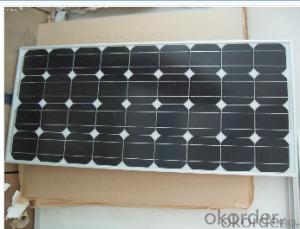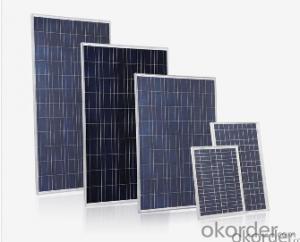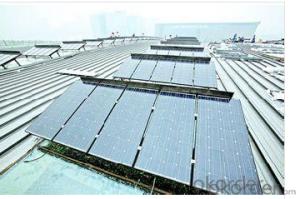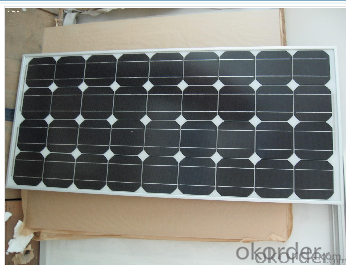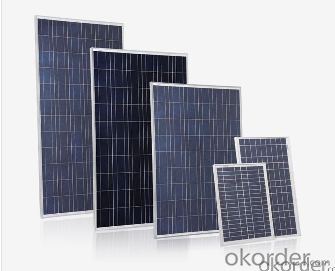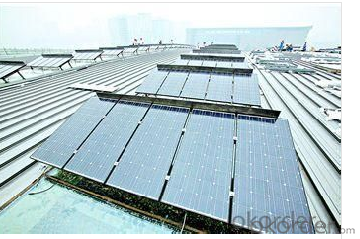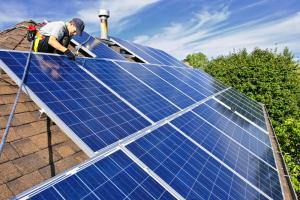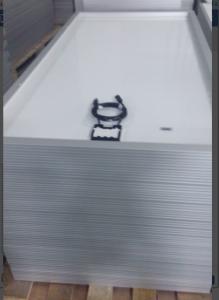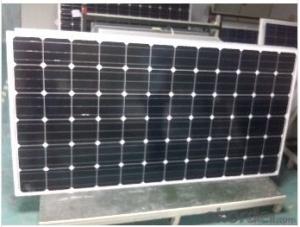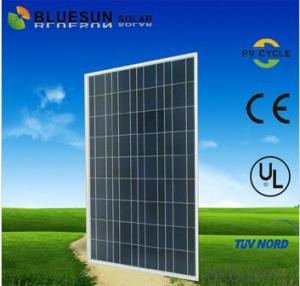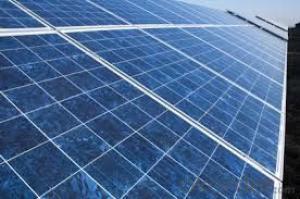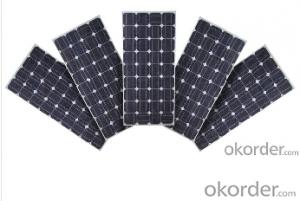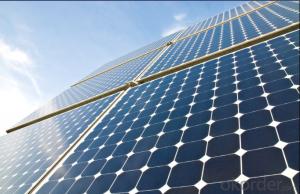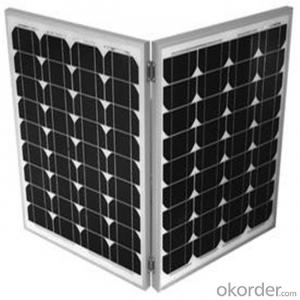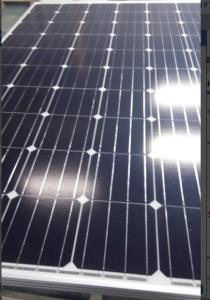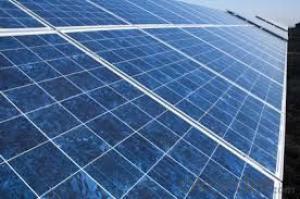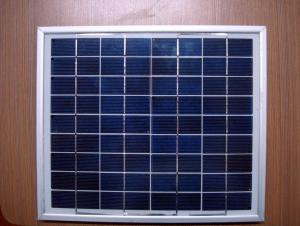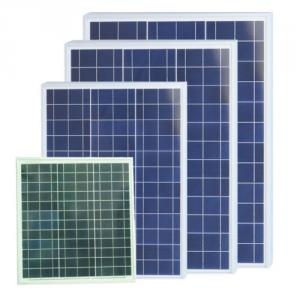Solar Panel with High Quality and Different Effiency from CNBM
- Loading Port:
- Shanghai
- Payment Terms:
- TT OR LC
- Min Order Qty:
- 1 PCS
- Supply Capability:
- 100000 PCS/month
OKorder Service Pledge
OKorder Financial Service
You Might Also Like
1.Product Description:
Solar Module
ABOUT YINGLI GREEN ENERGY
Yingli Green Energy Holding Company Limited (NYSE: YGE) is one of
the world’s largest fully vertically integrated PV manufacturers, which
markets its products under the brand “Yingli Solar“. With over 7.0GW
of modules installed globally, we are a leading solar energy company
built upon proven product reliability and sustainable performance. We
are the fi rst renewable energy company and the fi rst Chinese company
to sponsor the FIFA World CupTM.
2.FEATURE:
- High effi ciency, multicrystalline silicon solar cells with high transmission
and textured glass deliver a module effi ciency of up to 16.0%,
minimizing installation costs and maximizing the kWh output of your
system per unit area.
- Tight positive power tolerance of 0W to +5W ensures you receive
modules at or above nameplate power and contributes to minimizing
module mismatch losses leading to improved system yield.
- Top ranking in the “TÜV Rheinland Energy Yield Test” and the
“PHOTON Test” demonstrates high performance and annual energy
production.
RELIABILITY
- Tests by independent laboratories prove that Yingli Solar modules:
Fully conform to certifi cation and regulatory standards.
Withstand wind loads of up to 2.4kPa and snow loads of up to
5.4kPa, confi rming mechanical stability.
Successfully endure ammonia and salt-mist exposure at the highest
severity level, ensuring their performance in adverse conditions.
- Manufacturing facility certifi ed by TÜV Rheinland to ISO 9001:2008,
ISO 14001:2004 and BS OHSAS 18001:2007.
WARRANTIES
- 10-year limited product warranty1.
- Limited power warranty1: 10 years at 91.2% of the minimal rated power
output, 25 years at 80.7% of the minimal rated power output.
1In compliance with our Warranty Terms and Conditions.
QUALIFICATIONS & CERTIFICATES
IEC 61215, IEC 61730, MCS, CE, ISO 9001:2008, ISO 14001:2004, BS OHSAS
18001:2007, PV Cycle, SA 8000
ELECTRICAL PERFORMANCE
Electrical parameters at Standard Test Conditions (STC)
Module type YLxxxP-29b (xxx=Pmax)
Power output Pmax W 260 255 250 245 240
Power output tolerances ΔPmax W 0 / + 5
Module effi ciency ηm % 16.0 15.7 15.4 15.1 14.8
Voltage at Pmax Vmpp V 30.3 30.0 29.8 29.6 29.3
Current at Pmax Impp A 8.59 8.49 8.39 8.28 8.18
Open-circuit voltage Voc V 37.7 37.7 37.6 37.5 37.5
Short-circuit current Isc A 9.09 9.01 8.92 8.83 8.75
Electrical parameters at Nominal Operating Cell Temperature (NOCT)
Power output Pmax W 189.7 186.0 182.4 178.7 175.1
Voltage at Pmax Vmpp V 27.6 27.4 27.2 27.0 26.8
Current at Pmax Impp A 6.87 6.79 6.71 6.62 6.54
Open-circuit voltage Voc V 34.8 34.8 34.7 34.6 34.6
Short-circuit current Isc A 7.35 7.28 7.21 7.14 7.07
STC: 1000W/m2 irradiance, 25°C cell temperature, AM1.5g spectrum according to EN 60904-3.
Average relative effi ciency reduction of 3.3% at 200W/m2 according to EN 60904-1.
NOCT: open-circuit module operation temperature at 800W/m2 irradiance, 20°C ambient temperature, 1m/s wind speed.
OPERATING CONDITIONS
Max. system voltage 1000VDC
Max. series fuse rating 15A
Limiting reverse current 15A
Operating temperature range -40°C to 85°C
Max. static load, front (e.g., snow) 5400Pa
Max. static load, back (e.g., wind) 2400Pa
Max. hailstone impact (diameter / velocity) 25mm / 23m/s
SPECIFICATIONS:
Front cover (material / thickness) low-iron tempered glass / 3.2mm
Cell (quantity / material / dimensions /
number of busbars)
60 / multicrystalline silicon / 156mm x 156mm / 2 or 3
Encapsulant (material) ethylene vinyl acetate (EVA)
Frame (material / color / anodization color /
edge sealing) anodized aluminum alloy / silver / clear / silicone or tape
Junction box (protection degree) ≥ IP65
Cable (length / cross-sectional area) 1000mm / 4mm2
Plug connector
(type / protection degree) MC4 / IP67 or YT08-1 / IP67 or Amphenol H4 / IP68
PACKAGING SPECIFICATIONS
Number of modules per pallet 29
Number of pallets per 40' container 28
Packaging box dimensions
(L / W / H) 1700mm / 1135mm / 1165mm
Box weight 568kg
Unit: mm
• Due to continuous innovation, research and product improvement, the specifi cations in this product information sheet are subject to change
without prior notice. The specifi cations may deviate slightly and are not guaranteed.
• The data do not refer to a single module and they are not part of the offer, they only serve for comparison to different module types
IMAGES:
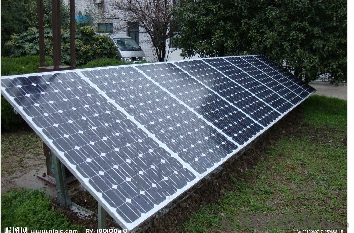
FAQ:
WHAT'S YOUR ADVANTAGES OF YOUR COMPANY?
1.CNBM is a state-owned company under jurisdiction of central goverment , one of Fortune 500 .Just because of this ,we can get more support and resources from our government.So ,it is realiable .
2.CNBM's solar products are high-qualified with TUV,UL,VDE,CE,ISO certificates. Our products ranges top in China.
3.Just as I mentioned in attahment ,we signed 500MW project with Urkan under the witness of our chairman Xi Jinping ,CNBM has ability to meet your large quantity needs,Our annual capacity is 1GW.
4.We can offer you a competitive price .Because you are our potential and valued customer .
5.CNBM website: http://www.icnbm.com/en/
6.We ,CNBM ,has our own factory :CNBM JETION SOLAR .We can also customize according to customers' need . You can google our factory .
- Q: How do solar panels affect the power grid?
- Solar panels can positively impact the power grid by producing clean and renewable energy. When connected to the grid, excess electricity generated by solar panels can be fed back into the system, reducing the overall demand for traditional fossil fuel-based power sources. This not only helps in reducing greenhouse gas emissions but also decreases the strain on the power grid, making it more reliable and sustainable.
- Q: Lower solar panel/wind turbine prices allow wider applications, hence a great help to a greener mother earth!
- economies of scale or mass production is the answer to just about any item being made cheaper.be it cars or computers or solar panels. Now, how to get there is the question..... market forces? as more people want a 'greener product demand goes up quantity produced goes up unit price goes down....but that takes awhile.... government help ? subsidies...the US gov takes some of your tax money and makes it available as rebate to people putting panels/wind systems in their homes, and establishes policies to companies to take less taxes if they build wind/solar.... government orders: You MUST put in a solar panel ( or we'll send the Green Police to bust you)
- Q: How do solar panels affect the roof's lifespan?
- Solar panels can actually extend the lifespan of a roof. They act as a protective layer, shielding the roof from the elements, such as UV rays, rain, and snow. This helps to prevent damage and deterioration, ultimately increasing the roof's longevity.
- Q: Can solar panels be installed in a community or neighborhood?
- Yes, solar panels can be installed in a community or neighborhood. In fact, many communities and neighborhoods are increasingly adopting solar energy as a sustainable and clean alternative to traditional power sources. These installations can be done on residential rooftops, community buildings, or even as shared solar projects where multiple households can benefit from a single solar installation. Installing solar panels in a community or neighborhood not only helps reduce carbon emissions but also promotes energy independence and cost savings for residents.
- Q: can solar panels have glass between the panels and the sun?
- Should be okay but you might lose a little power if the windows blocks infrared or ultraviolet light [which I believe they do]
- Q: What is the difference between on-grid and off-grid solar systems?
- The main difference between on-grid and off-grid solar systems is how they are connected to the power grid. On-grid solar systems are connected to the local utility grid, allowing excess electricity generated by the solar panels to be fed back into the grid and credited to the homeowner. This means that on-grid systems rely on the grid for power during times when the sun is not shining, such as at night or during cloudy days. On the other hand, off-grid solar systems are not connected to the power grid and operate independently. These systems typically use batteries to store excess electricity generated during the day for use during periods of low or no sunlight. Off-grid systems are commonly used in remote areas where connecting to the grid is not feasible or cost-effective. Overall, the distinction lies in the connection to the power grid and the reliance on it for electricity supply.
- Q: How do solar panels affect the environment?
- Solar panels have a positive impact on the environment as they produce clean, renewable energy without emitting harmful greenhouse gases. They help reduce air pollution, combat climate change, and conserve natural resources by decreasing our reliance on fossil fuels. Additionally, solar panels have a minimal environmental footprint during their operation and can be recycled at the end of their lifespan, making them a sustainable energy choice.
- Q: Can solar panels be used to power a construction site?
- Yes, solar panels can be used to power a construction site. They can provide a clean and renewable source of energy to run the equipment and machinery needed for construction activities. By utilizing solar power, construction sites can reduce their reliance on fossil fuels and lower their carbon footprint.
- Q: trees vs solar panels who would win?
- Trees for sure. Their already plotting the overthrow of humans.
- Q: How do solar panels affect the aesthetics of a roof?
- Solar panels can have both positive and negative effects on the aesthetics of a roof. On one hand, the sleek and modern design of solar panels can enhance the overall appearance of a roof, giving it a more futuristic and eco-friendly look. On the other hand, the presence of solar panels can be seen as an obstruction or deviation from the traditional appearance of a roof, which some individuals may find unappealing. Ultimately, the impact on aesthetics will depend on personal preference and the integration of solar panels into the overall design of the building.
Send your message to us
Solar Panel with High Quality and Different Effiency from CNBM
- Loading Port:
- Shanghai
- Payment Terms:
- TT OR LC
- Min Order Qty:
- 1 PCS
- Supply Capability:
- 100000 PCS/month
OKorder Service Pledge
OKorder Financial Service
Similar products
Hot products
Hot Searches
Related keywords
